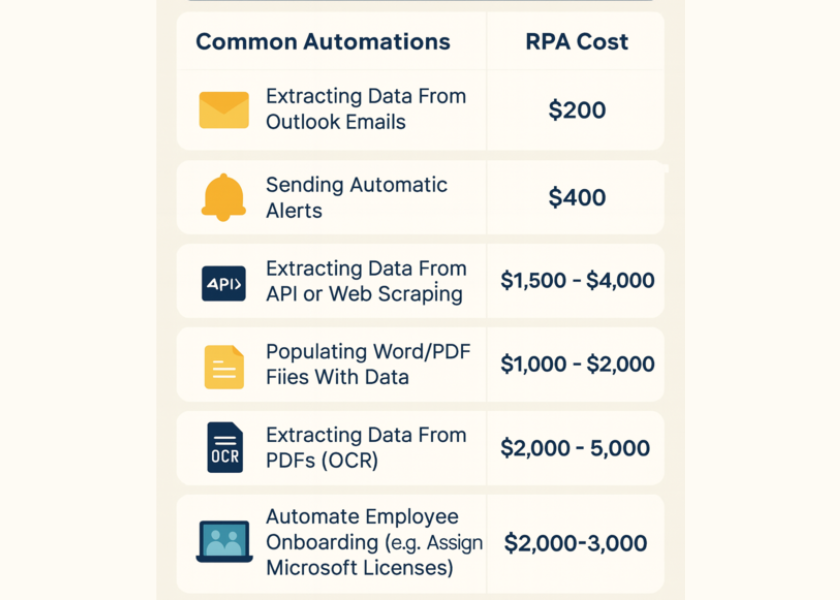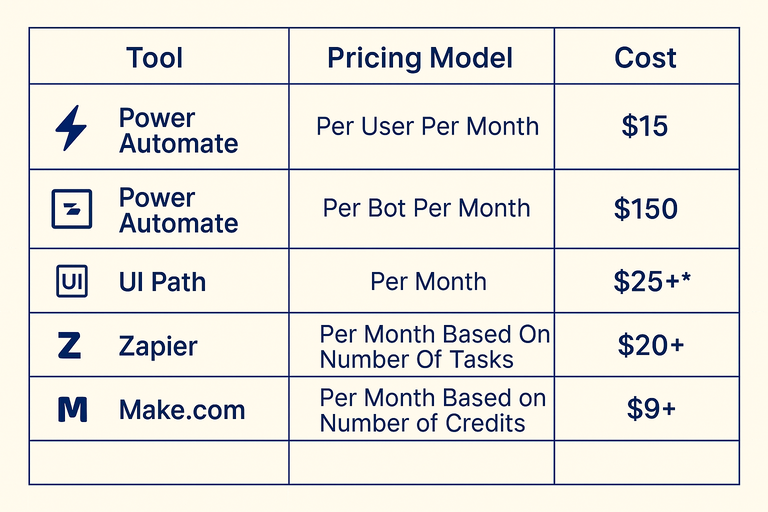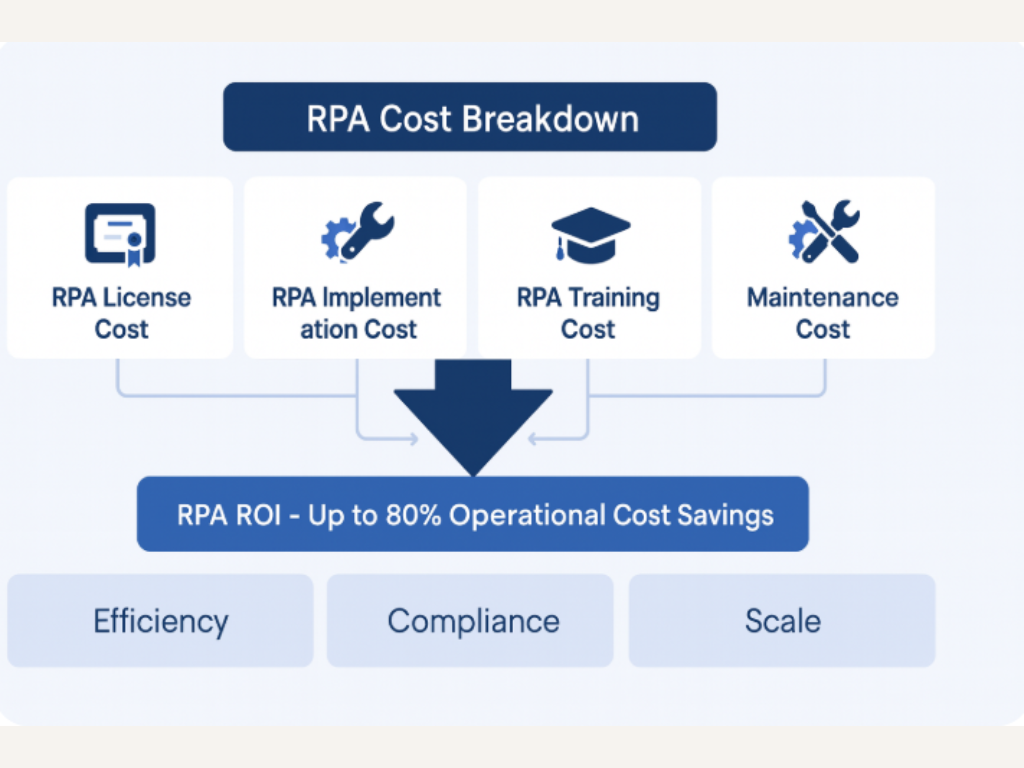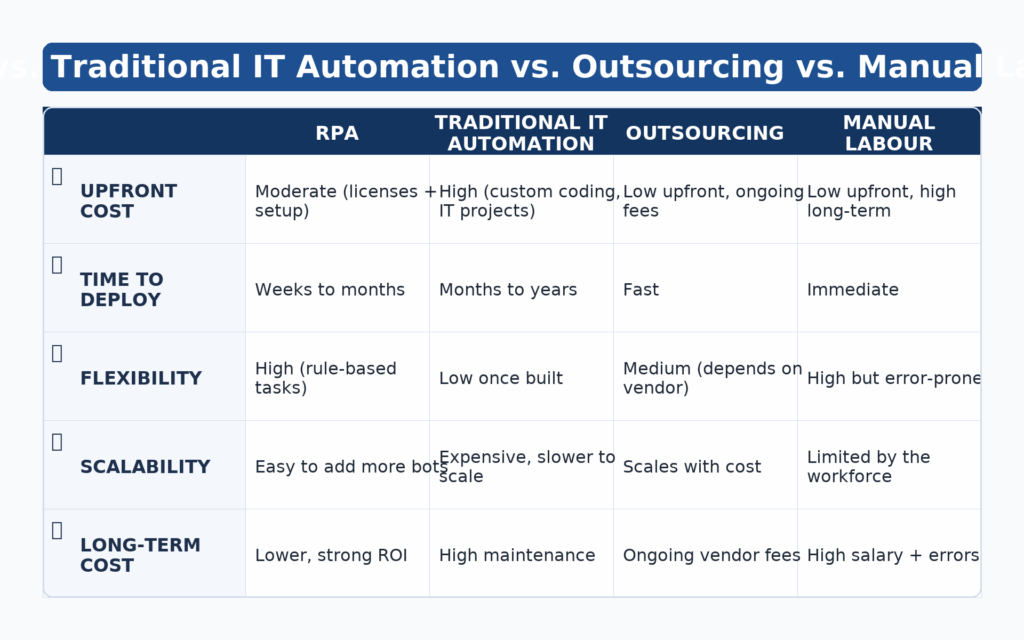
As a Robotic Process Automation consultancy we price RPA projects for our clients all the time.
Based on our experience, Robotic Process Automation (RPA) costs vary from $1,000 to $5,000 per bot on average. However, some small automations could be developed for as little as a couple of hundred dollars.
Apart from the development costs, you will also have the licensing costs, which you pay to RPA software vendors that you use. Finally, you might also be paying for extra plugins for your RPA software for certain functionality like extracting the data from additional data sources.
We will cover all the factors that make up the cost of your RPA project in this article so that you can budget properly.
We will also discuss the benefits of RPA so that you can do the cost-benefit analysis. Notably, RPA leads to cost reduction of 25-80% for ongoing processes.
The cost of RPA depends on several factors, like the software you choose, licensing fees, setup and infrastructure, ongoing maintenance, and training for your team.
The scale of automation also matters, since more processes mean higher costs (but often greater savings too).
All of these can be largely classified into: license cost and implementation cost. Let’s look at these two in more detail.

*UI Path provides a very limited number of features for $25 per month. They target Enterprise users so the real costs will be $5,000-10,000 per year.
RPA license costs vary from $10 per month to tens of thousands of dollars per year for enterprise level software. RPA license costs will be ongoing after implementation so it is important to choose the right tool for your budget.
RPA license types are different per vendor.
Overall, based on our experience, Power Automate is the most affordable RPA tool since monthly costs are predictable. UI Path is the most expensive RPA tool that we have had a chance to work with.
We have a guide to help you compare different RPA tools. You can use this guide to find which tool has the functionality that you need.
The implementation cost of RPA with our consultants is usually $1,000-5,000 per bot. However, a typical implementation requires several bots.
So, what are the factors influencing costs?
RPA may not be the only type of automation your company needs. Other options are:
The biggest business case for RPA is cost savings. Companies that adopt RPA report a 25-80% reduction in operational costs. This is from automating repetitive tasks, reducing errors, and speeding up processes that take hours.
Take RPA in accounting, for example. Many teams spend hours entering invoices, copying numbers between spreadsheets or preparing month-end reports. With RPA, these tasks run automatically. At Vidi Corp, we’ve helped clients automate accounts receivable follow-ups, invoice tracking, and financial reporting. The results:
Beyond accounting, similar savings are seen in HR, customer service, and supply chain operations. The more rule-based the process is, the bigger the gain.
For businesses looking to automate, the question isn’t if RPA saves money, but how much. If you’re ready to see what RPA can do for your operations, you can hire an RPA developer to design and implement a solution for you.

Many businesses adopt RPA with an end goal of saving on operational costs, but the value of RPA is way beyond that.
When you add up these benefits with the cost savings, you’ll see the full value RPA is adding to your business.
To calculate RPA ROI, consider both direct and indirect benefits:
And then calculate the payback period. This is how long it takes for the savings to pay back your RPA investment. For many businesses, the payback period is less than a year, making RPA one of the fastest technology investments to show results.

There’s a common saying that “just because you can automate something doesn’t always mean you should”
It’s true because not all automation options make sense for every business. This is how RPA stands in comparison to other automation strategies:
RPA implementation typically costs $1,000 to $5,000 per bot, depending on scale and vendor.
Most businesses spend between a couple of hundred dollars and $15,000 annually for licenses.
RPA can reduce operational costs by 25% to 80% each year.
Yes, when implemented well, RPA usually pays for itself through cost savings and efficiency gains.